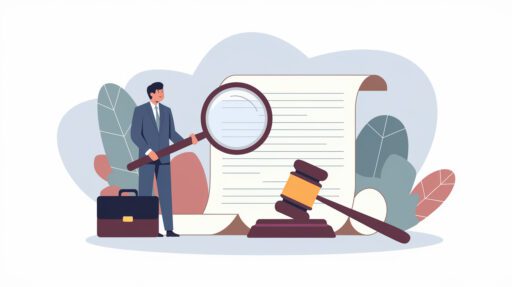Legal issues with stock images can come up if you’re unaware of licensing and copyright rules. In today’s digital world, visuals play a huge role in content creation. Whether you’re running a blog, managing a business website, or posting on social media, stock images help enhance the visual appeal of your content, but failing to address legal issues with stock images can lead to serious consequences. However, many users tend to overlook the legal side of using these images, which can lead to serious issues. This article will guide you through the essential legal considerations when it comes to stock images, helping you avoid copyright problems and ensuring you stay compliant with licensing agreements.
Why Legal Considerations Are Crucial When Using Stock Images
Stock images have become a staple in digital content creation. They offer a quick and budget-friendly way to boost your visuals without needing to hire a photographer, but ignoring potential legal issues with stock images can be risky. However, not all images are free to use, and failing to understand the legal aspects can lead to copyright infringement, fines, or even legal action. Using legally obtained images helps you steer clear of these risks and shows respect for the intellectual property rights of creators.
Common Legal Issues with Stock Images and How to Avoid Them

One common mistake people make is assuming that all images found online are free to use. This misconception can lead to several legal issues with stock images, such as:
- Incorrect Licensing: Users may choose a license that doesn’t cover their intended use, like opting for a personal-use license when they need it for a commercial project.
- Unauthorized Use: Downloading and using images without paying for the right license can lead to copyright claims.
- Using Images for Unauthorized Purposes: Many stock images come with specific terms of use. For example, some may be used only online, while others can’t be used in print or commercial campaigns.
To avoid these common pitfalls, it’s essential to carefully read the licensing agreements and terms of use.
Understanding Different Types of Image Licenses
Not all licenses are the same. Here’s a quick rundown of the common types of licenses you may come across:
- Royalty-Free: This license allows you to use the image multiple times after a one-time fee without paying royalties each time. Still, there are limitations on how the image can be used.
- Rights-Managed: This is a more restrictive license that usually limits how, where, and for how long you can use the image. It often costs more but provides exclusivity.
- Creative Commons: These images can be used for free but often come with specific requirements, like attribution. It’s important to understand the different types of Creative Commons licenses, as some may limit commercial use.
Understanding these distinctions is vital to ensuring your use of stock images aligns with legal requirements. For more in-depth information on how different licenses work, visit our detailed guide on understanding stock image licensing types.
How to Verify the Legitimacy of Stock Image Websites

Not every stock image website is trustworthy. To avoid legal problems, make sure you’re getting your images from legitimate sources. Here are a few tips:
- Red Flags of Questionable Sources: Be cautious of sites offering high-quality images for free without clear licensing information. They may not have the rights to distribute the images.
- Tips for Verification: Look at reviews, check for licensing details, and see if the website provides a way to contact them for clarification.
- Top Trusted Stock Image Providers: When it comes to sourcing stock images, choosing reputable providers is crucial to ensure compliance with licensing terms and to avoid legal issues. Here are two of the best paid options and two reliable free options:
- Best Paid Stock Image Sites:
- Shutterstock: One of the most popular platforms for high-quality stock images, offering millions of photos, vectors, and illustrations. It features flexible licensing options, ensuring that you can find suitable agreements for various needs. Known for its extensive library, it makes it easy to find images that match different themes and industries.
- Adobe Stock: Seamlessly integrates with Adobe’s suite of creative tools, making it ideal for designers and content creators. It offers a wide range of high-resolution images, videos, and templates, covering diverse projects, with clear licensing agreements that cater to various commercial and creative use cases.
- Best Free Stock Image Sites:
- Unsplash: A go-to resource for free, high-quality images contributed by photographers worldwide. All images are free to use for personal and commercial projects, though some restrictions apply, especially on redistributing images. Unsplash is renowned for its wide variety of visuals that suit both professional and casual projects.
- Pexels: Offers a vast collection of free stock photos and videos with a user-friendly interface. It provides images that fit different themes and aesthetics, ideal for blogs, websites, and social media. Pexels allows usage of images without requiring attribution, though giving credit is always appreciated.
- Best Paid Stock Image Sites:
These platforms are trusted by millions of users for their clear licensing agreements and high-quality visuals. Whether you’re looking for premium, exclusive images or free options to enhance your content, these sites provide reliable resources that you can depend on.
Always do your research before choosing a stock image provider to steer clear of legal issues. For a curated list of reliable and trustworthy options, check out our guide on the best websites for free stock images.
Case Studies of Legal Disputes Involving Stock Images
Real-world examples can help illustrate the risks of mishandling stock images:
- Case 1: Small Business Website Misuse: A small business owner downloaded an image from a lesser-known stock photo website, thinking it was free to use because there were no payment prompts. However, the image was actually rights-managed, and the business hadn’t purchased the correct license. When the copyright holder found out, they sent a legal notice demanding compensation. The business ended up paying a significant settlement fee and legal costs, all of which could have been avoided by verifying the image’s licensing terms.
- Case 2: Restaurant Chain and Print vs. Digital Licensing: A popular restaurant chain used a stock image of a famous landmark on its printed menus. They had purchased a license, but it only covered digital use, like websites and social media. Since the license didn’t extend to printed materials, the restaurant was in violation. The copyright holder sued, and the restaurant had to pay a hefty fine plus additional licensing fees to keep using the image in print.
- Case 3: Blogger’s Failure to Attribute a Creative Commons Image: A travel blogger used a Creative Commons-licensed photo but didn’t include the required attribution. The original photographer discovered this and demanded compensation. While the image was free to use, the blogger’s failure to follow the license terms led to a financial settlement. This case shows why it’s crucial to understand and respect Creative Commons licenses.
- Case 4: Marketing Agency’s Rights-Managed Image in a Nationwide Campaign: A marketing agency used a high-quality image from a free stock photo website in a nationwide ad campaign, thinking the image was safe to use. However, it was actually rights-managed, and the free site wasn’t authorized to distribute it. The rightful owner noticed the image in a major campaign and filed a lawsuit, leading to a costly legal battle.
- Case 5: Tech Startup’s Unauthorized Modification of Stock Images: A tech startup bought a license for a stock image and used it in promotional materials. They then modified the image by adding their company logo, which wasn’t allowed under the license. The image creator issued a cease-and-desist letter, and the startup had to renegotiate licensing terms to keep using the modified image.
- Case 6: E-Commerce Brand’s Editorial-Use-Only Image in Ads: An e-commerce brand found an image labeled “editorial use only” and used it in a product advertisement. However, editorial-use-only images are meant for news articles, blogs, or non-commercial content, not ads. The copyright holder quickly sent a cease-and-desist letter, and the brand had to remove the image and pay damages.
These examples show that even small oversights can lead to significant legal troubles. Always review and understand the terms of your image licenses.
The Importance of Reading the Fine Print on Licensing Agreements

Licensing agreements contain critical details about how an image can be used. Key elements to focus on include:
- Usage Restrictions: Make sure the license allows for commercial use if you need the image for marketing or advertising.
- Exclusivity and Modification Rights: Some licenses restrict how an image can be edited or where it can be used.
- Geographical Limitations: Check that the license covers your target region, especially if your content has a global audience.
If any terms are unclear, reach out to the provider for clarification. Understanding the fine print can save you from legal problems later on.
Legal Consequences of Misusing Stock Images
Misusing stock images can lead to:
- Financial Penalties: Copyright holders may demand substantial compensation for unauthorized use.
- Lawsuits and Legal Action: In some cases, misuse can lead to lawsuits, which can be costly and damaging.
- Reputational Damage: Legal disputes can hurt your brand’s reputation, affecting your credibility and trust.
These consequences show why it’s essential to stick to legal standards when using stock images.
How to Ensure Compliance When Modifying Stock Images

When you need to modify stock images, keep these things in mind:
- Understand What Modifications Are Allowed: Some licenses restrict edits, such as adding text or logos.
- Seek Permission for Major Changes: If you plan significant alterations, contact the provider to see if additional permissions are required.
- Proper Attribution for Modified Images: Always give credit if it’s required, even if the image has been changed.
Following these guidelines will help you avoid violations and stay compliant.
Emerging Legal Trends in the Use of Digital Images
The legal landscape around digital images keeps changing. Here are a few trends to watch:
- Copyright Laws and Digital Images: New updates to copyright laws can affect how digital images are used, especially on social media.
- AI-Generated Images: As AI-generated visuals become more common, legal questions about their use and licensing are emerging.
- Trends in Social Media Image Use: Platforms like Instagram and Facebook have specific rules for image use, and breaking these can lead to problems even with stock images.
Staying informed about these trends will help you avoid unintentional legal conflicts.
Conclusion
Using stock images is a practical way to enhance your content, but it comes with responsibilities. From understanding the types of licenses to reading the fine print and knowing the consequences of misuse, paying attention to legal issues with stock images is key to avoiding complications. Always make sure your use of stock images aligns with copyright laws and licensing agreements. Stay informed, do your due diligence, and don’t hesitate to seek legal advice if you’re unsure about any aspect of image use.
For more insights, check out our other guides on choosing the best stock images and understanding image licensing.
